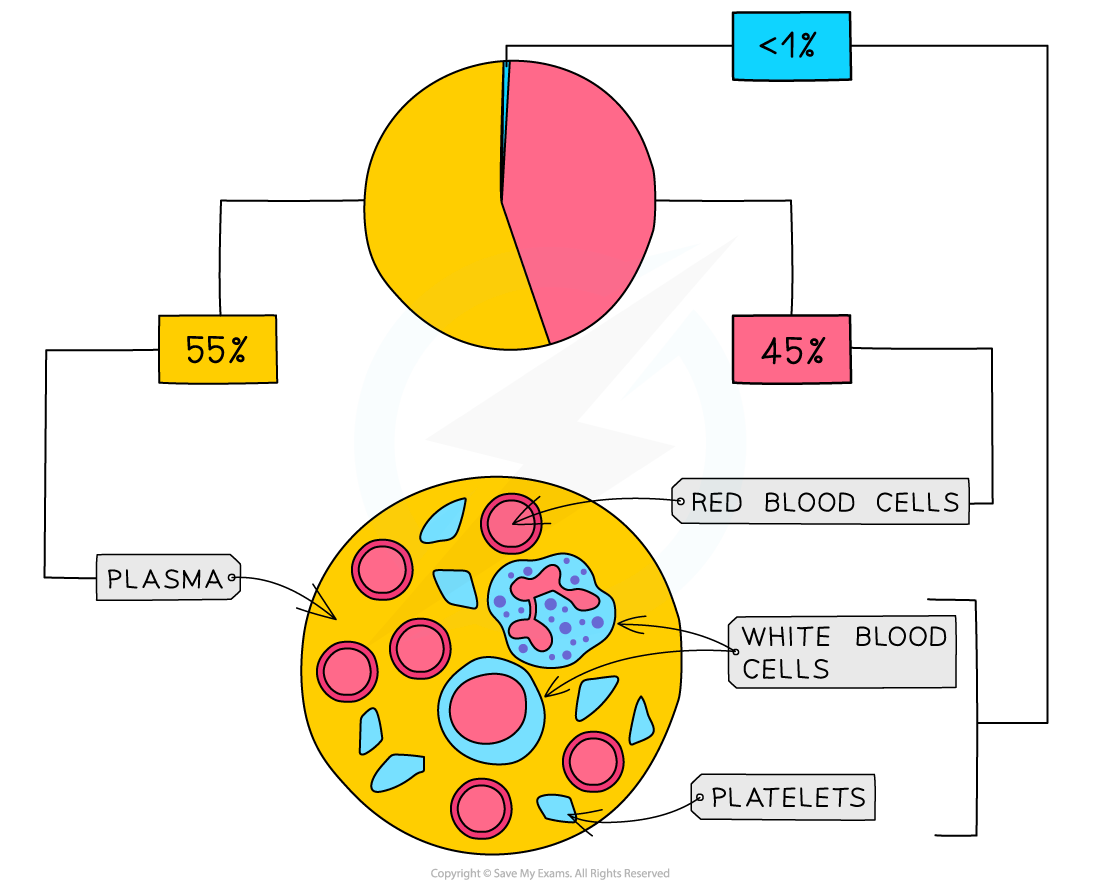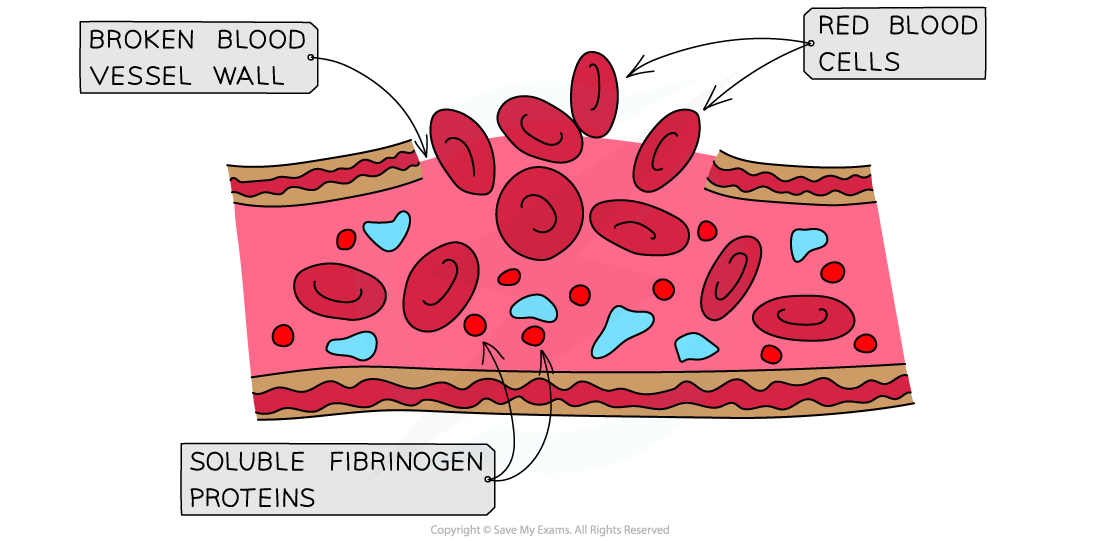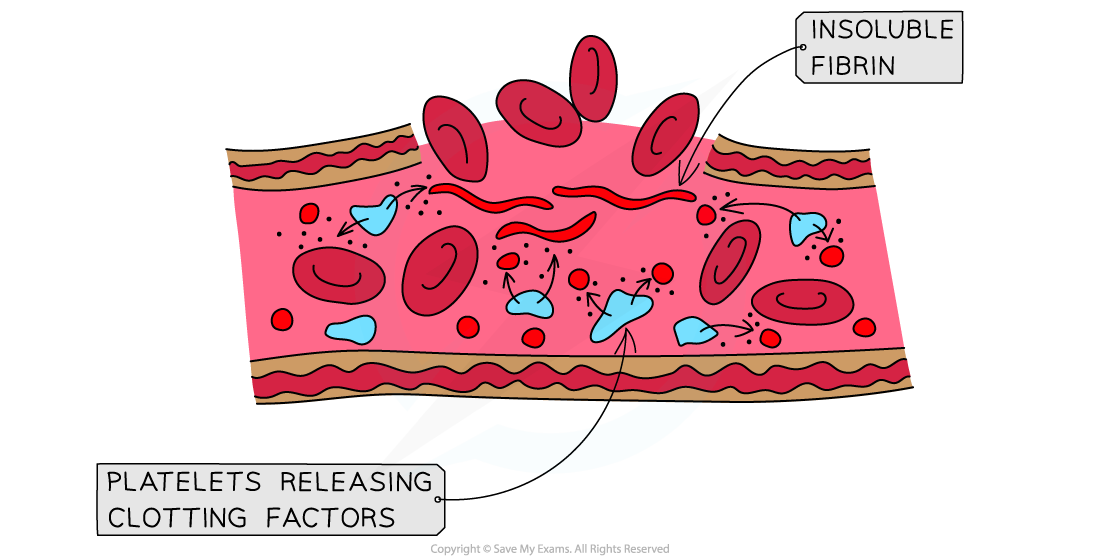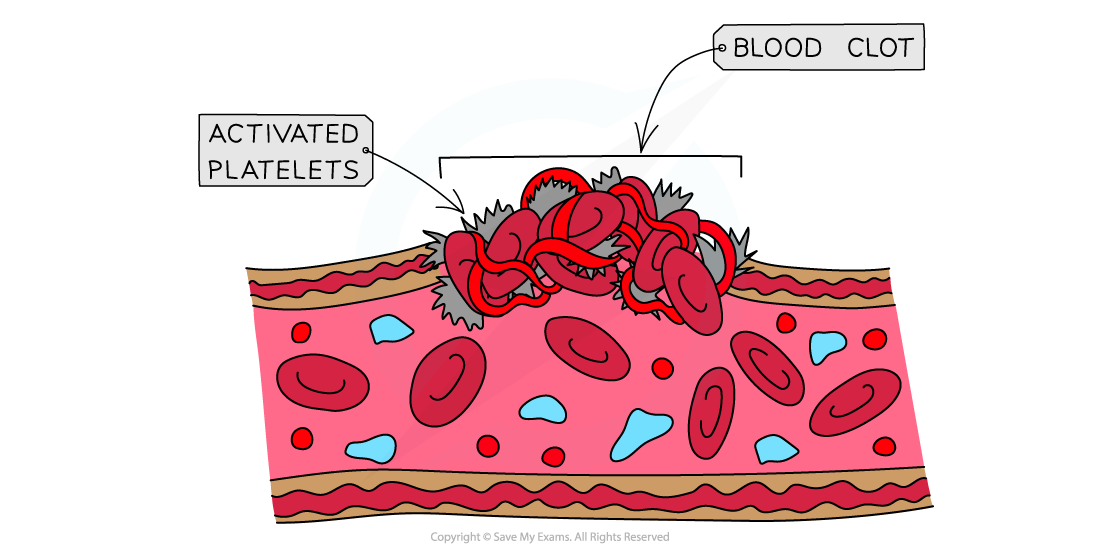Platelets
- When the skin is cut, microorganisms have an entry point to get into the body
- The first line of defence is compromised
- In order to minimise the risk of substantial blood loss and entry of unwanted microorganisms, the blood starts to clot to seal the wound
- In response to blood vessel damage, platelets form a temporary plug to stem bleeding
- Platelets are cellular fragments that make up one component of the blood
- They release chemicals called clotting factors that trigger a chemical cascade which results in blood clotting

The blood is made up of 4 key components including plasma, red blood cells, white blood cells and platelets
Blood Clotting Proteins
- The chemical cascade, triggered by the clotting factors, involves a large number of steps and several plasma proteins
- First of all, the clotting factors stimulate the release of the enzyme thrombin
- Thrombin catalyses the conversion of the soluble protein fibrinogen into fibrin, which is insoluble
- Fibrin forms a mesh that traps more platelets and blood cells to prevent entry through the wound
- A small initial stimulus is amplified to produce a large amount of fibrin so that the wound is quickly sealed
- Exposure to air results in the hardening of the mesh to create a scab



Blood clot formation
Clotting in Coronary Arteries
Causes of blood clots in the coronary arteries
- A blood clot in the coronary arteries is called coronary thrombosis
- Several factors may increase the risk of coronary thrombosis developing:
- Atherosclerosis in the coronary arteries results in a build-up of layers of fatty material (plaque) causing damage to the endothelium wall
- Bulging of the lumen of the artery causes a blockage which reduces the space for blood flow
- Deposition of calcium ions can worsen the situation by hardening the endothelium
- Lesions can also sometimes form due to ruptures in the atheroma
- Atherosclerosis in the coronary arteries results in a build-up of layers of fatty material (plaque) causing damage to the endothelium wall
Consequences of blood clot formation in the coronary arteries
- Occlusion of the coronary arteries is a common problem that can lead to significant health issues such as coronary heart disease
- The coronary arteries deliver oxygen and nutrients to the cardiac muscle tissue
- If a blood clot forms in the coronary arteries, it can cause blockages
- A blockage means that the tissue beyond that point is deprived of oxygen and nutrients, so it is unable to respire aerobically
- As a result, cells are unable to produce a sufficient amount of ATP which inhibits normal cardiac muscle contraction resulting in irregular and uncoordinated movement called fibrillation
- If not rectified, either naturally or through medical intervention, fibrillation could lead to death
- A heart attack (myocardial infarction) may also occur in situations where the blood supply is completely inhibited so that the cardiac muscle tissue starts to die
- This can be fatal
Risk factors for coronary thrombosis
- There are several factors which have shown a clear correlation with increased chances of coronary thrombosis or heart attacks
- The main risk factors for include:
- Genetic factors
- Age and sex
- High blood pressure
- Smoking
- High concentrations of low-density lipoproteins (LDLs)
- Diabetes
- Obesity
- Lack of exercise
Exam Tip
Remember, correlation does not prove causation: There are many contributing factors which will affect the likelihood of developing a coronary thrombosis, as a result, we cannot say that any single factor is causative. We can say that there is a correlation between that factor and the incidence of coronary thrombosis
